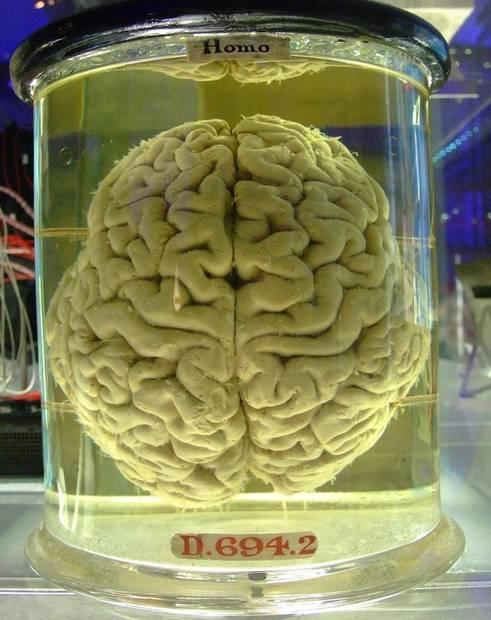Science
Scientists Identify Brain Circuit That Could Alleviate Chronic Pain

Researchers at the University of Pennsylvania have identified a brain circuit that may help mitigate chronic pain by prioritizing survival needs. This groundbreaking discovery offers new possibilities for personalized pain relief treatments, targeting the source of pain at the brain level. Chronic pain, which persists long after an injury has healed, affects millions globally and is often linked to an overactive sensory input in the brain.
The study focuses on specific neurons known as Y1 receptor neurons, located in the lateral parabrachial nucleus (lPBN) of the brain. These neurons play a crucial role in overriding chronic pain signals, indicating that the brain can modulate pain responses when confronted with urgent biological needs, such as hunger or fear. Acting as a neural switchboard, Y1 receptor neurons balance pain perception against other life-sustaining requirements.
In the initial phase of this research, scientists discovered that Y1 receptor neurons do not react solely to sharp, acute pain. Instead, they exhibit what is termed “tonic activity,” maintaining a steady firing pattern during prolonged pain episodes. This phenomenon can be likened to keeping a car’s engine running even when parked securely, highlighting the brain’s capacity to manage ongoing pain signals.
The research team demonstrated how the parabrachial nucleus can filter sensory input to diminish pain perception when immediate survival becomes a priority. The next critical question was identifying which components of the brain act as the pain switch. The researchers pinpointed neuropeptide Y (NPY) as a key player in this mechanism. NPY, a signaling molecule, helps the brain navigate competing needs. When threats like hunger or fear arise, NPY interacts with Y1 receptors in the parabrachial nucleus to suppress ongoing pain signals.
This adaptive response is vital; if an individual is starving or threatened by a predator, lingering pain becomes a distraction that could compromise survival. Consequently, neurons activated by these urgent threats release NPY, effectively silencing pain signals to allow focus on immediate needs.
The study also delves into the unique structure of Y1 receptor neurons within the lPBN. Contrary to what might be expected, these neurons do not form neatly defined anatomical or molecular populations. Instead, they are dispersed among various cell types, indicating a complex network that warrants further investigation.
Future research aims to utilize Y1 neural activity as a potential biomarker for chronic pain, a significant advancement that has eluded drug developers and clinicians for years. Additionally, the findings suggest that pain relief may not solely hinge on pharmacological interventions. Behavioral strategies, such as exercise, meditation, and cognitive behavioral therapy, could also influence how these brain circuits operate.
The research is detailed in the journal Nature under the title “A parabrachial hub for need-state control of enduring pain.” This study not only sheds light on the biological underpinnings of chronic pain but also opens avenues for innovative treatment approaches that consider the intricate relationship between pain and survival instincts.
-

 Lifestyle2 months ago
Lifestyle2 months agoWinnipeg Celebrates Culinary Creativity During Le Burger Week 2025
-

 Health2 months ago
Health2 months agoMontreal’s Groupe Marcelle Leads Canadian Cosmetic Industry Growth
-

 Science2 months ago
Science2 months agoMicrosoft Confirms U.S. Law Overrules Canadian Data Sovereignty
-

 Education2 months ago
Education2 months agoRed River College Launches New Programs to Address Industry Needs
-

 Technology2 months ago
Technology2 months agoDragon Ball: Sparking! Zero Launching on Switch and Switch 2 This November
-

 Science2 months ago
Science2 months agoTech Innovator Amandipp Singh Transforms Hiring for Disabled
-

 Technology2 weeks ago
Technology2 weeks agoDiscord Faces Serious Security Breach Affecting Millions
-

 Technology2 months ago
Technology2 months agoGoogle Pixel 10 Pro Fold Specs Unveiled Ahead of Launch
-

 Science2 months ago
Science2 months agoChina’s Wukong Spacesuit Sets New Standard for AI in Space
-

 Technology2 months ago
Technology2 months agoWorld of Warcraft Players Buzz Over 19-Quest Bee Challenge
-

 Education2 months ago
Education2 months agoAlberta Teachers’ Strike: Potential Impacts on Students and Families
-

 Business2 months ago
Business2 months agoDawson City Residents Rally Around Buy Canadian Movement
-

 Technology2 weeks ago
Technology2 weeks agoHuawei MatePad 12X Redefines Tablet Experience for Professionals
-

 Business2 months ago
Business2 months agoNew Estimates Reveal ChatGPT-5 Energy Use Could Soar
-

 Science2 months ago
Science2 months agoXi Labs Innovates with New AI Operating System Set for 2025 Launch
-

 Technology2 months ago
Technology2 months agoInnovative 140W GaN Travel Adapter Combines Power and Convenience
-

 Technology2 months ago
Technology2 months agoFuture Entertainment Launches DDoD with Gameplay Trailer Showcase
-

 Technology2 months ago
Technology2 months agoGlobal Launch of Ragnarok M: Classic Set for September 3, 2025
-

 Education1 month ago
Education1 month agoBrandon University’s Failed $5 Million Project Sparks Oversight Review
-

 Business2 months ago
Business2 months agoBNA Brewing to Open New Bowling Alley in Downtown Penticton
-

 Technology2 months ago
Technology2 months agoNew IDR01 Smart Ring Offers Advanced Sports Tracking for $169
-

 Technology2 months ago
Technology2 months agoArsanesia Unveils Smith’s Chronicles with Steam Page and Trailer
-

 Science2 months ago
Science2 months agoNew Precision Approach to Treating Depression Tailors Care to Patients
-

 Technology2 months ago
Technology2 months agoHumanoid Robots Compete in Hilarious Debut Games in Beijing










